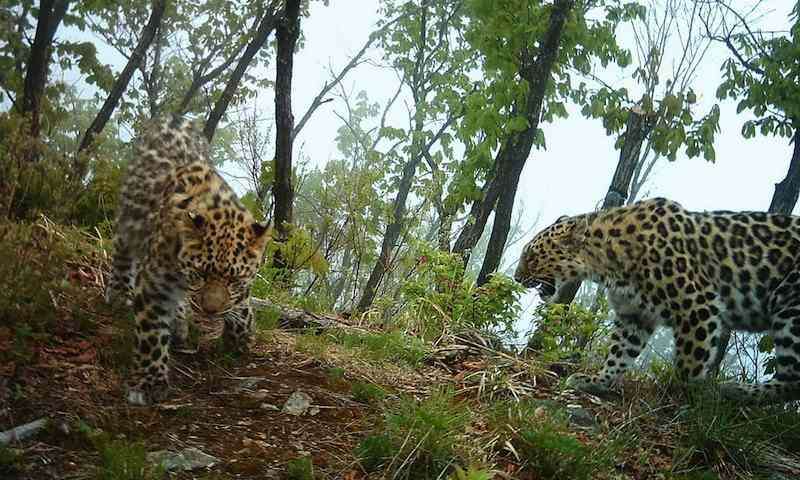Panda Population Grows by 16% As China's Preservation Efforts Pay Off
The number of giant pandas in the wild increased by 268 over the last decade, bringing the worldwide population to 1,864 -- a 16.8% rise compared to the last panda survey in 2003.

At least 57 Amur leopards now exist in Russia's Land of the Leopard National Park, up from just 30 cats counted in 2007, according to new census data announced last week. An additional 8-12 leopards were counted in adjacent areas of China, meaning the number of Amur leopards, a rare subspecies considered the world's rarest wild cat, has more than doubled over the past seven years.
The census, taken with camera traps spread out over more than 900,000 acres of primary leopard habitat, collected around ten thousand photographs that scientists used to identify nearly 60 individual animals. Individuals are determined by distinctive patterns of spots found on leopard fur.
"Despite still being on the brink of extinction, the Amur leopard is showing encouraging signs of gradual recovery, demonstrating that dedicated conservation efforts do pay off," said Carlos Drews, director of WWF's global species program.
Conservationists are working toward creating a collaboration between Russia and China to monitor leopard populations across the border in neighboring Chinese nature reserves. One of the highly anticipated next steps would be the establishment of a Sino-Russian trans-boundary nature reserve.
Land of the Leopard National Park, which includes all of the Amur leopard's known breeding areas, was hailed as a lifeline to the critically endangered Amur leopard when established in 2012. The park is also home to the endangered Amur tiger.
The census was carried out jointly by the park and the Russian Academy of Sciences with the support of The Amur Leopard Center and WWF-Russia.
(Source: WWF – Photo credit: WWF-Russia/ISUNR)
Be the first to comment